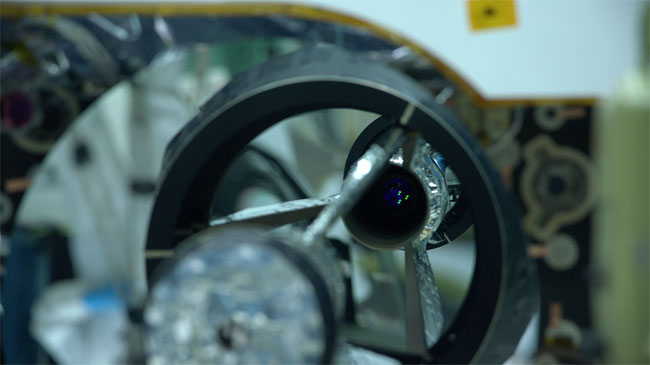New LiDAR System to Map Earth's Forests

The Global
Ecosystem Dynamics Investigation (GEDI) LiDAR is being assembled in a cleanroom
at NASA's Goddard Space Flight Center. Image courtesy of NASA.
A laser instrument designed to map the world's forests in high-resolution 3D is undergoing final integration and testing at NASA's Goddard Space Flight Center, according to NASA and the University of Maryland. The Global Ecosystem Dynamics Investigation (GEDI) instrument is expected to launch aboard SpaceX's 16th commercial resupply services mission, targeted for late 2018. The GEDI project is being led by the University of Maryland and is being built at NASA Goddard.
A LiDAR instrument, GEDI has three lasers that will produce eight ground tracks. The laser pulses will reflect off clouds, trees, and the planet's surface as the space station and GEDI orbit Earth. While the instrument will gather height information about everything in its path, it is specifically designed to measure forests. The amount and intensity of the light that bounces back to GEDI's telescope will reveal details about the height and density of trees and vegetation, including the structure of leaves and branches within a forest's canopy.
GEDI will be the first space-borne laser instrument to measure the structure of Earth's tropical and temperate forests in high resolution and three dimensions. These measurements will help fill in critical gaps in scientists' understanding of how much carbon is stored in the world's forests, the potential for ecosystems to absorb rising concentrations of carbon dioxide in Earth's atmosphere, and the impact of forest changes on biodiversity, according to program managers.
The team is now preparing to put GEDI through a battery of prelaunch tests to ensure it is ready to withstand the rigors of launch and operating in space.
"Scientists have been planning for decades to get comprehensive information about the structure of forests from space to deepen our understanding of how this structure impacts carbon resources and biodiversity across large regions and even globally, as well as a host of other science issues," said professor Ralph Dubayah. "This is why seeing the instrument built and racing toward launch is so exciting."



































